- Published on
Mardi Himal
- Authors

- Name
- Shlok Khemani
- @shloked_
Dawn cracks and the morning sun shyly peeps out of a sloping ridge. The blanket of clouds in the valley below starts rising, going from dull gray to every possible color of the rainbow.
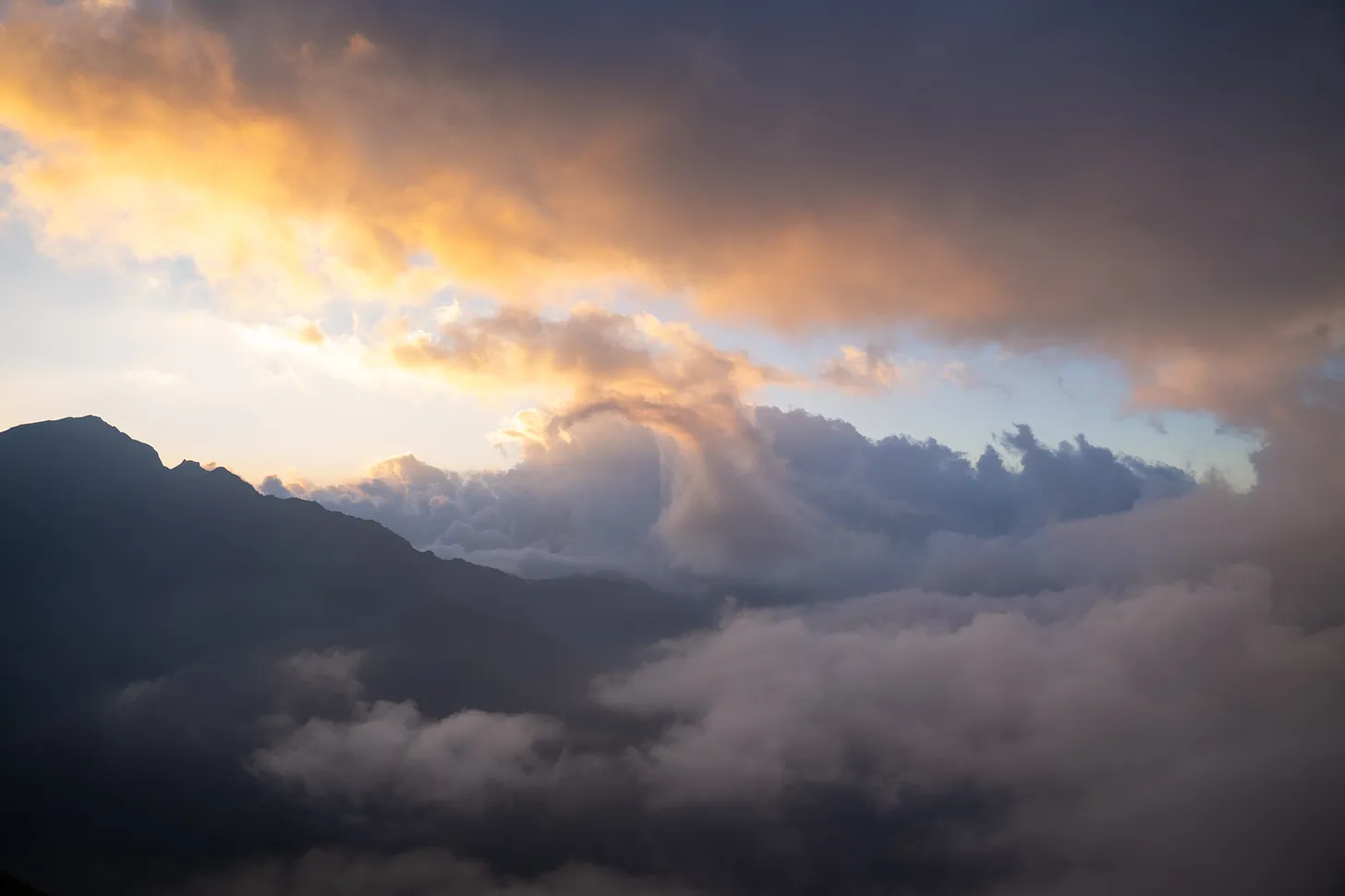
In the south, lies layer after layer of blue hills, each lighter than its predecessor. In the distance, you identify spots that you hiked through, wondering how you ever walked so much.
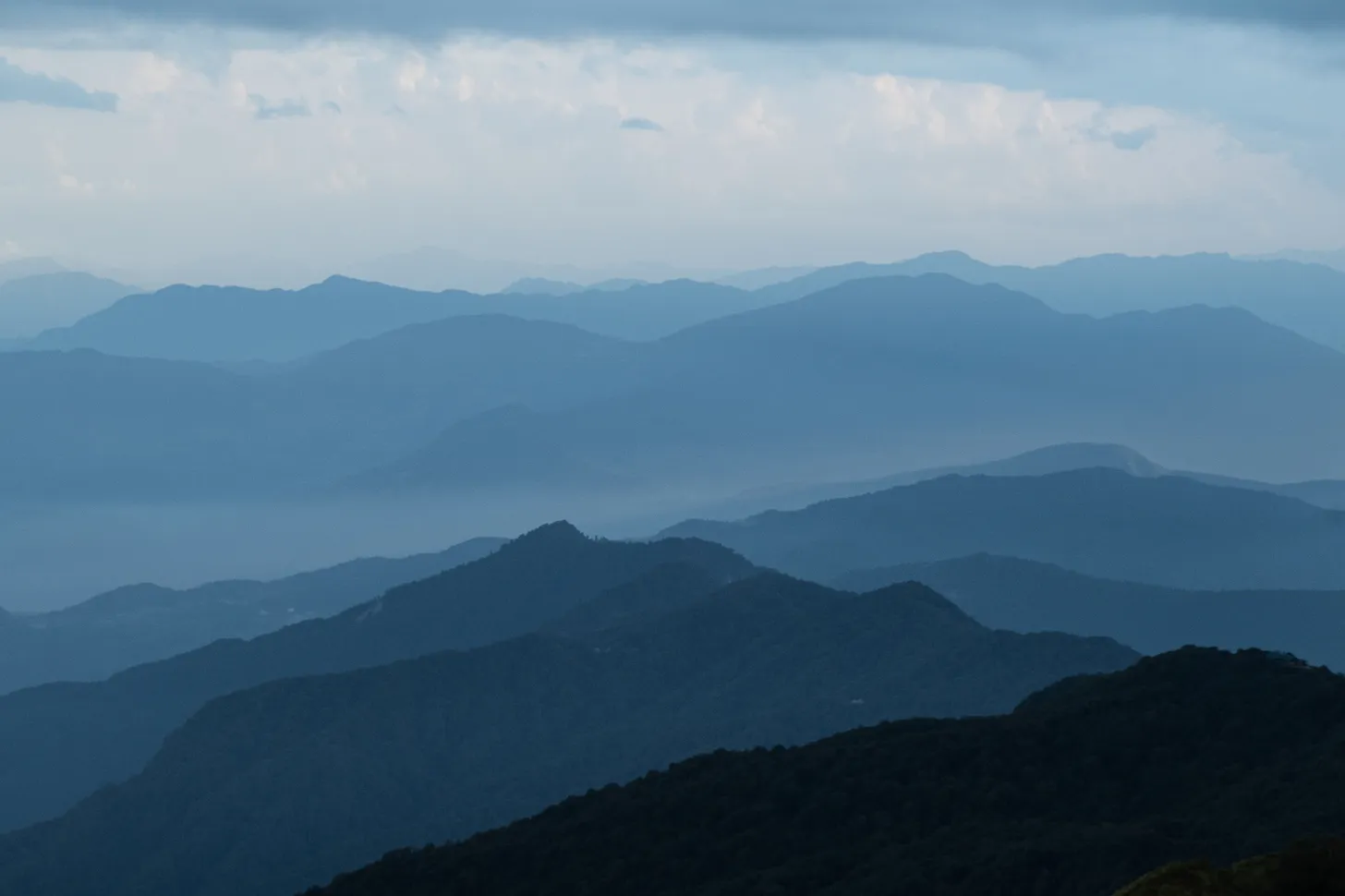
In the west, the Annapurna South, with its giant stature and frighteningly steep rock faces, towers over you. Hiding behind it, you catch a glimpse of Annapurna I, the 10th highest (and most dangerous) mountain in the world.
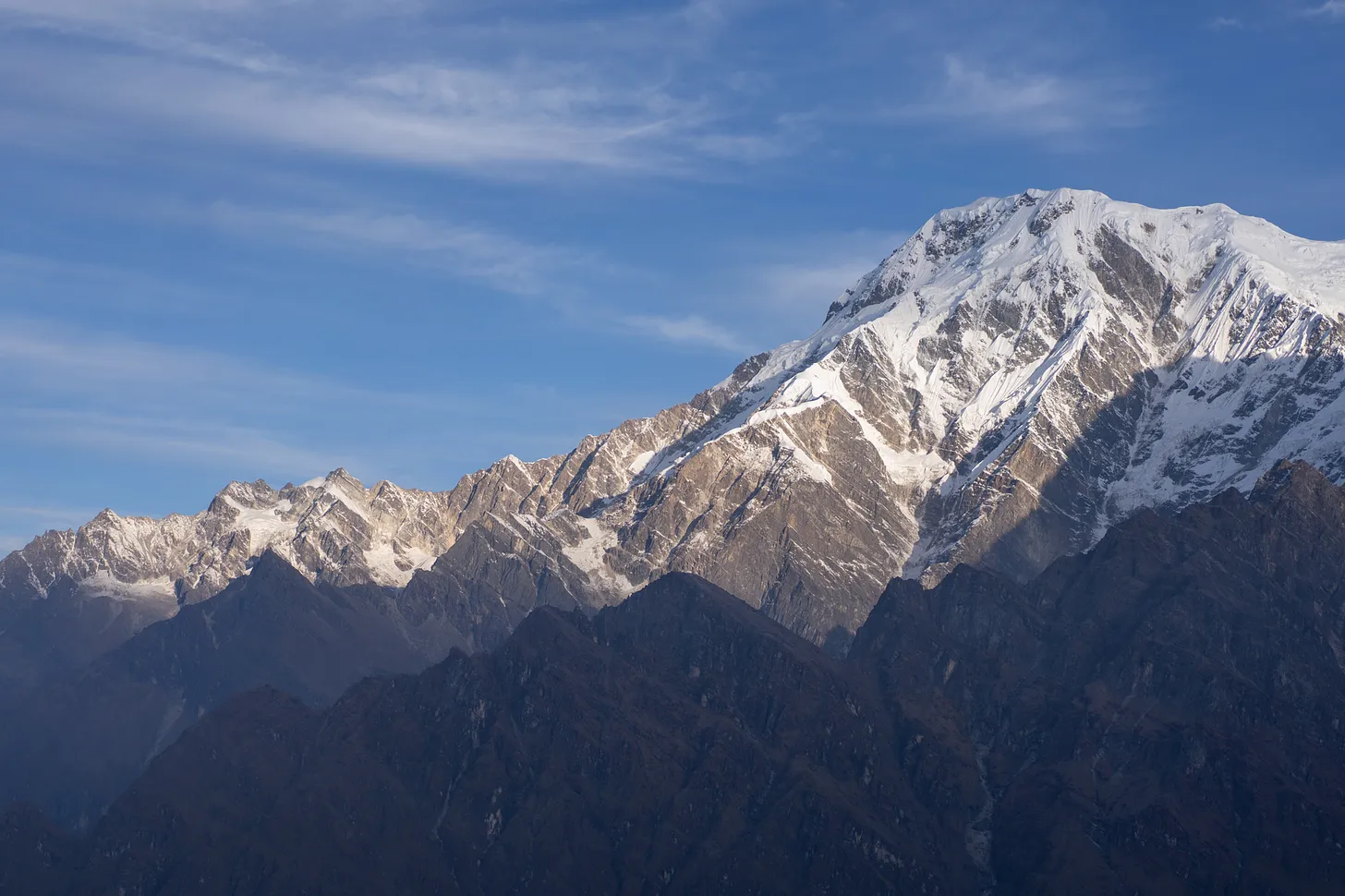
Finally, in the north, lies the crown jewel of the panorama - the fish-tail mountain, Machhapuchhare. Embodying the legend of being Shiva’s home, the elegant peak stands firm, protecting the Annapurna mountains and its valleys, rivers, animals, and people.
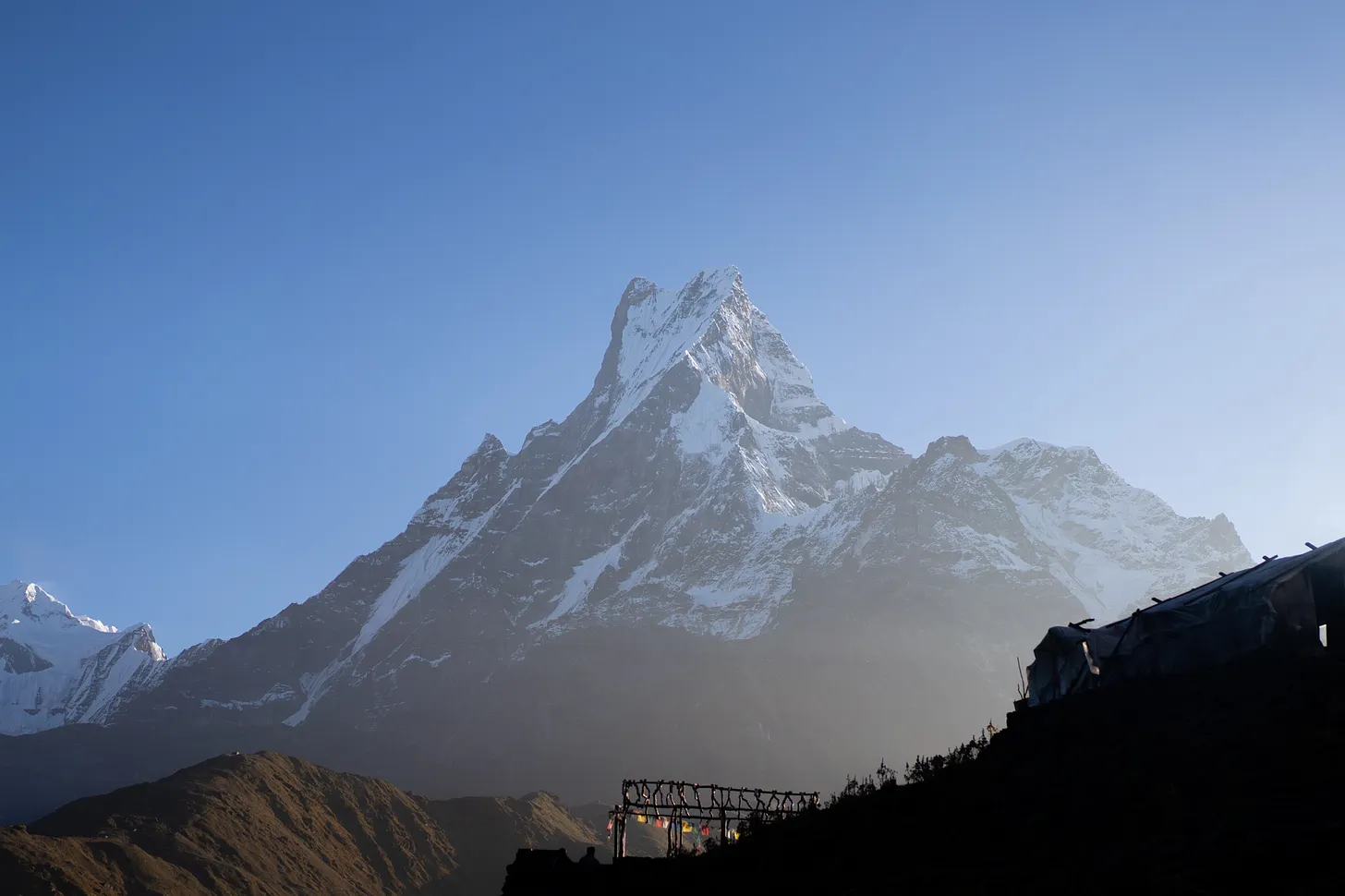
You struggle to take everything in, it’s overwhelming. You don’t know where to look, there is splendor in every direction. You hear a couple of people gasp and finally understand what they mean when they say beauty can be breathtaking. One Spanish hiker, resting on his trekking poles, sums up the scene in one apt word - ‘magnífico’.
I recently spent some time hiking up and down the Mardi Himal ridge, a short trek in the Annapurna sanctuary near Pokhara in Nepal.
In this post, I’m going to try convincing you to make this your next vacation (I’m biased but it’s a no-brainer). This is not a detailed travel guide (I will link to that). Instead, I try to cover some of the intricacies of the hike that guides don’t cover.
Let’s go.
Why do Mardi Himal
A Visual Spectacle
I made an attempt earlier but it’s a difficult task to put the pure scenic beauty of the Himalayas into words. So I’ll be crude. Two fellow hikers, one Canadian and one Scot, shared a common opinion about view from the Mardi Himal viewpoint - it was the most beautiful sight they’d ever seen. This struck me because they were both well-traveled and came from two of the most beautiful countries in the world.
First, the mountains themselves. Oh, the mountains. The two main peaks on the trail are the fish-tailed Machhapuchhare and Annapurna South. Each day, as you get closer to them, they grow in magnificence. Some moments, it’s clear and you see them in their full splendour. In other moments, they’re covered in clouds and you patiently yearn for a crack in the grey to catch a glimpse. And then, when they’re visible, it’s like seeing them for the first time, and you appreciate them once again in all their glory. It’s difficult to ever get enough.
You can also expect:
- Drives through the beautiful Nepalese countryside - streams, rivers, villages, waterfalls, farmland, valleys, terraced rice fields
- Long, meditative walks in pristine forests - butterflies, beetles buzzing, mushrooms, moss growing on walls and trees, creepers, more streams, the sun dazzling through the leaves of tall trees
- Valleys - never-ending blue hills, cloud beds, distant rivers and villages, the Annapurna Base Camp trail, waterfalls off steep rock faces
- The night sky - the Milky Way, Venus, Mars, Jupiter, Saturn, every constellation you read about as a kid, shooting stars, satellites (all best identified via the Stellarium app)
- Sunrises so good that someone said “I never thought sunrises could be so good”
- Sunsets that never seem to end (where it gets colder every passing minute and you torture yourself, promising that you will be out for just a few more moments)
- Animals and birds - dogs, goats, mules, yaks, sparrows, ravens, eagles, jaguars (if you’re lucky), and so many more that are so foreign that you can’t identify them
Again, it’s a visual spectacle.
Time
Most people complete the Mardi Himal trek in 4 days. Yep. That’s it.
It’s pretty wild when you think about it. All of what I covered, in 4 days.
I’ve completed over 15 treks across the Himalayas and Mardi Himal is by far the most value you can get out of your time.
That being said, some people complete the trek in 3 days while others take 6. The length is a function of your fitness, deadlines to get home, and what else you have planned on the trip, among other factors. But most people do it in 4. (I recommend doing it in 5).
All in all, if there is a direct flight between your city and Kathmandu, you can leave and be back home in 6 days. Of course, this is crammed and you’d ideally want to add some buffer time for rest and sightseeing in the cities. But it’s possible. And I can think of few better ways to spend 6 days.
Infrastructure
Nepal is a world-class trekking destination, perhaps the best globally.
Usually, for multi-day hikes in the mountains, hikers have to set up their tents, figure out water sources, cook their food, sleep on the ground in sleeping bags, use makeshift washrooms, and carry all the equipment to facilitate all of this. While there is an undeniable novelty to living like this for a bit, it increases the barriers to entry for new hikers. It’s highly inconvenient because of how different this way of living is from what we’re accustomed to in cities. This also means that, in most cases, if you’re just getting started in the mountains, you either have to tag along with an organized tour or professional guide or with more experienced friends.
Nepal, on the contrary, has this wonderful concept of tea houses. What perhaps started as literal tea houses for hikers to rest and sip some chai has transformed into a highly organized system of what can best be described as lodges in the mountains. On all the popular treks, each campsite has multiple tea houses that serve the function of easing the inconvenience for hikers. They provide the basic amenities you need to survive: rooms with beds and a blanket, cooked (and amazing) food, proper washrooms, and charging points. Some of them even have wifi!
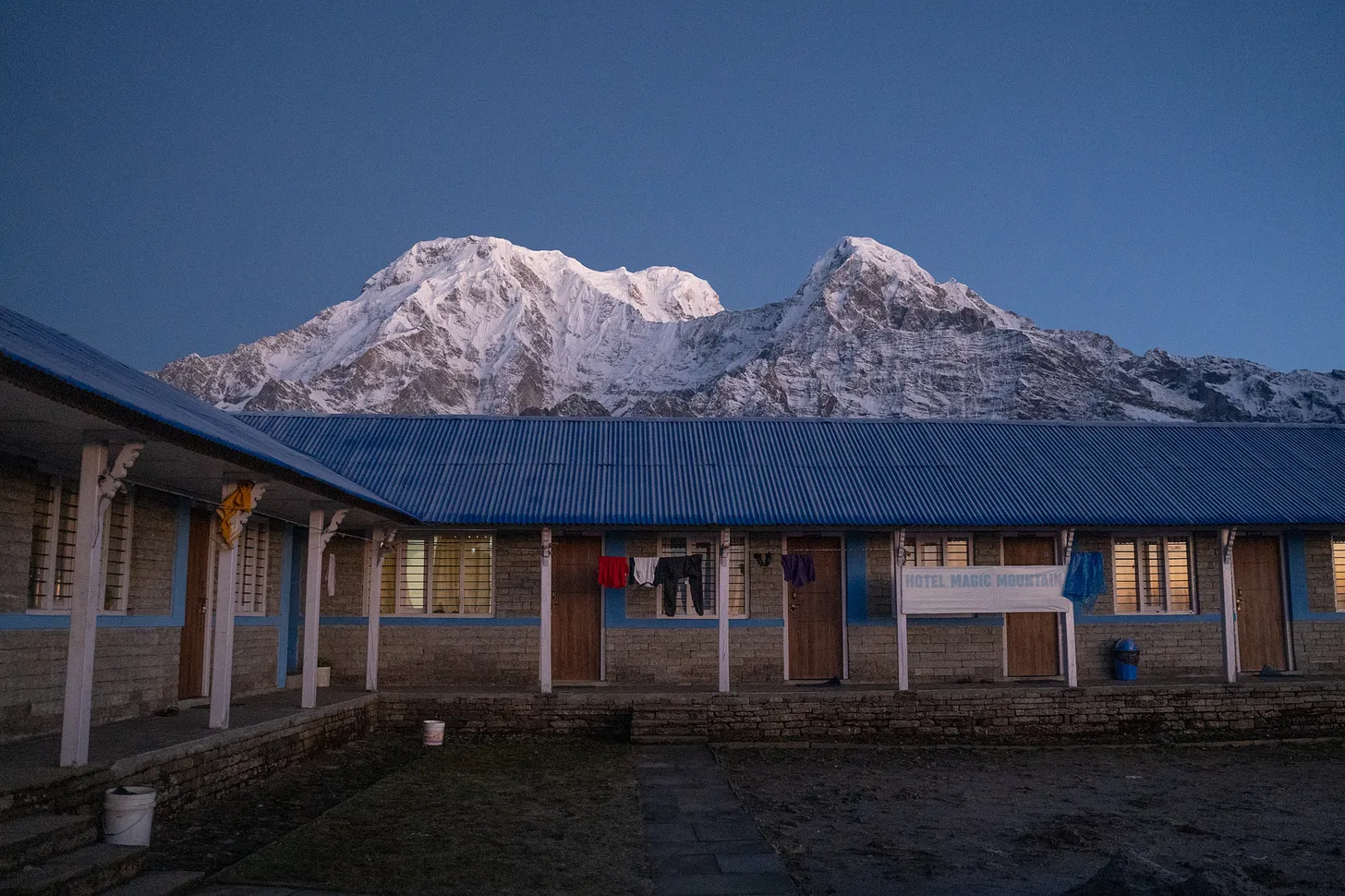
This arrangement means that as a hiker, all you have to do is hike from campsite to campsite, without worrying about accommodation, food, or water. If you’ve ever trekked before, you’ll realize that this is a game-changer.
Nepal also has clearly defined, well-marked trails. For vast stretches, very tedious inclines are replaced by slightly less tedious flights of stairs. Even if you do get confused, apps like maps.me provide crowd-sourced GPS routes that are highly accurate. If you want to get lost, it has to be a deliberate effort.
These two factors have one massive implication - you can do the Mardi Himal trek by yourself (solo or with your group). Even if it’s your first time, a guide or organized group tour is not needed. Of course, if you’re not confident, you can still go with either. But it’s by no means a necessity.
People you meet
Because of the allure of the world’s highest mountains and unparalleled convenience, Nepal has become the de facto global trekking destination. This means you get to meet and hike with people from all over the world. Some of the folks I came across:
- A German couple traveling Asia after recently quitting their jobs
- A recent English graduate teaching math across underprivileged schools in Nepal and India
- A Canadian electrician traversing across Asia till he reaches Australia, where he plans to find a job and settle
- A Cathay Pacific pilot bringing his partner to the mountains for the first time
- A Scot pit-stopping in Nepal on his way back home from Japan
- An Australian returning to Nepal a few years after a previous life-changing trip
- Three brothers, separated by life, reconvening after years of living in different countries
- An American-Israeli mother of two traveling by herself
- Three European friends settled in Nepal for 5 years, speaking almost flawless Nepali
Some are young, others are old. Some are alone, others with their partners or in groups. For some, it’s a short break from work. For others, it’s a small part of a longer, transformative trip. You meet people from all walks of life. Each of them has a unique story. Each of them has their own reason for sharing the same week-long journey as you.
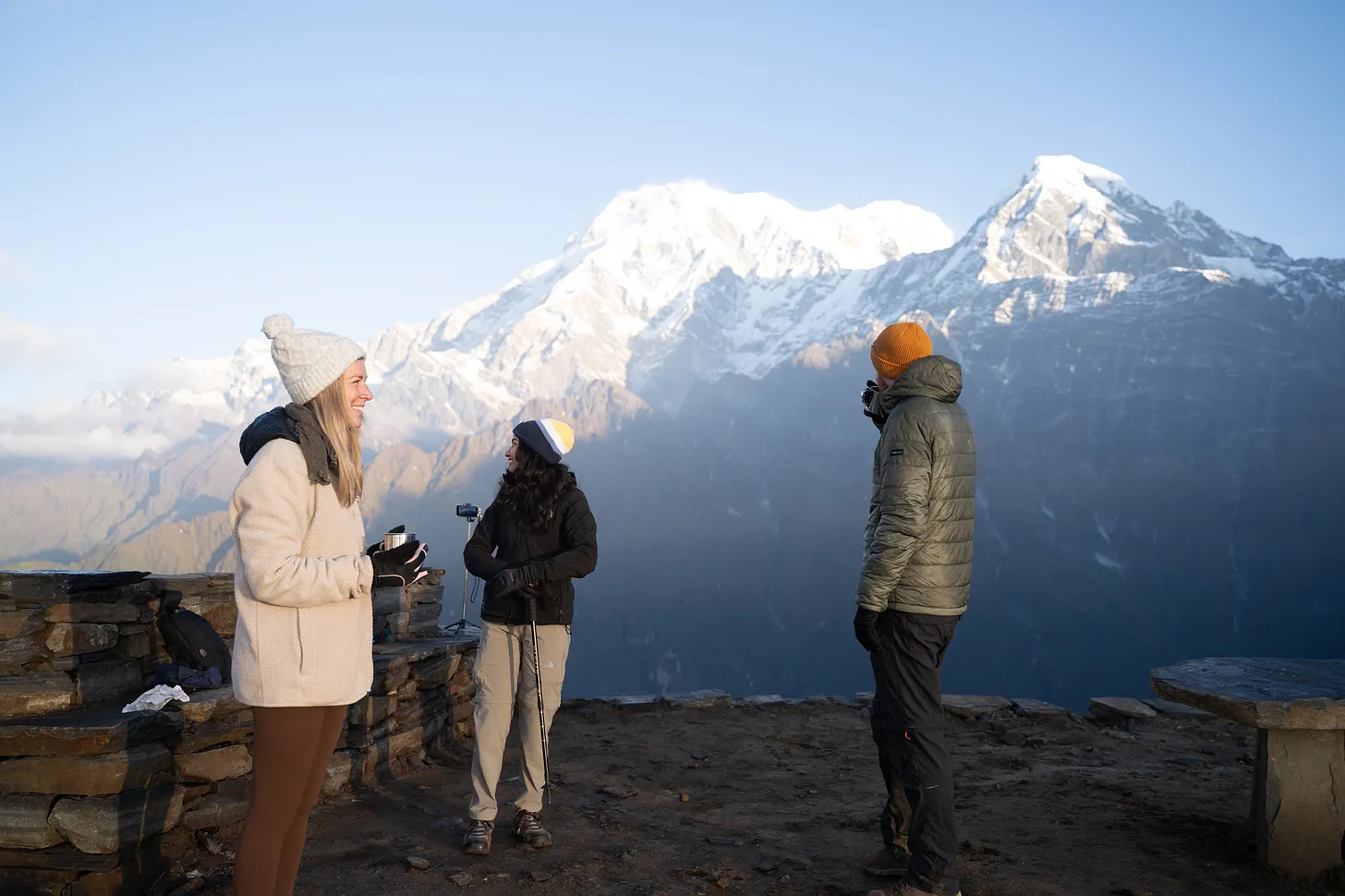
It’s easy to have conversations. The fact that you’re hiking in the mountains means that there are common strains of interest. You wonder over the same peaks. You complain about the same leeches. You trade stories and recommendations. You talk about life. You realize that we are all very different, yet so very similar.
Apart from being educative and mind-opening, a few hours of conversation can lead to making friends for life.
Life Changing
Trekking in Nepal is a meditative, spiritual experience.
It could be the sheer size of the mountains that makes you realize that there are things out there bigger than yourself.
It could be a conversation with someone who just left their job that gives you the courage to take the plunge yourself.
It could be the extended time spent in nature that pushes you to change neighborhoods or move to a new city.
It could be the fact that you’re finishing a hard thing that gives you the strength to complete more hard things.
It could be a clearing of the head that helps you recognize your true calling.
Whether the change is small or big, one thing is for certain. You come out of the experience as a different person.
Can you do it?
If you’re still reading, you might be wondering if this is a trek you can physically do.
Short answer? In all likelihood, yes.
That is not because the trek is easy. It is not. No trek worth doing is easy. You need to be at least somewhat physically fit. You should be able to climb a few flights of stairs without feeling like you’re dying. You should be able to run at least 1.5 km at a stretch. The good news? Most people can either already do this or reach here after a few weeks of effort.
Given Nepal’s world-class infrastructure and the short length of the trek, this is an ideal trek for beginners. I’ve done this trek with two first-timer friends. I’ve met countless other hikers who’ve never trekked before. I’ve seen 70 and 80-year-old folks complete it. So yes, if you want to do it, you probably can.
Carrying a 10kg backpack is often a blocker to people wanting to hike. It’s not always easy. First, because it’s only 4 days, you can travel minimally. You often need much less than you think. If it’s still difficult, you can offload your package to a porter who will carry your bag for you. A porter can be easily found either before you start your hike or mid-way if needed (we did this).
Costs
The Mardi Himal trek lies near Pokhara, Nepal’s second-largest city. How much it costs depends on how you do the trek:
Solo/unguided: this means that you complete the trek without any external help - no guide, no tour. Assuming you do the hike in 4 days, a conservative Pokhara to Pokhara cost will be 20,000NPR (13,000INR or 150USD) per person. I don’t know about you, but compared to my other holidays, that is insane value for money.
If you’re not confident about going solo, you can hire a guide. They help you navigate the route and are usually very knowledgeable, fun, and non-intrusive. Guides cost 3,000NPR (2,100INR or 25USD) per day. If you’re more than one person, you split these costs. Two great guides I met are Bhola (+977-9846994982) and Nischal (+977-9864898638). If you need assistance with your backpack, you can get a porter for 2,000NPR (1,300INR or 15USD) per day. Each porter can, on average, carry the weight of two hikers. If you’re taking both a guide and a porter, your guide will usually help you find a porter.
- Guided tours: you can join a tour from either Kathmandu or Pokhara. This comes with guides and porters. Hikers I spoke to told me this cost them 300 to 500 USD per person. You can find a bunch of these online. I wouldn’t recommend going down this route, mainly because it’s overpriced (2x) with the trekking company taking a huge cut.
Concluding Thoughts
Doing the Mardi Himal trek is a no-brainer. Not only is it one of the most beautiful places in the world but also convenient, quick, cheap, and great for beginners. It might change your life.
It’s getting more crowded by the year. The earlier you go, the better!
Here’s a 4-day itinerary. If you want to make it 5 days, I would suggest spending two nights at high camp.
Feel free to reach out to me over email or Twitter if you have questions (or need more motivation)!